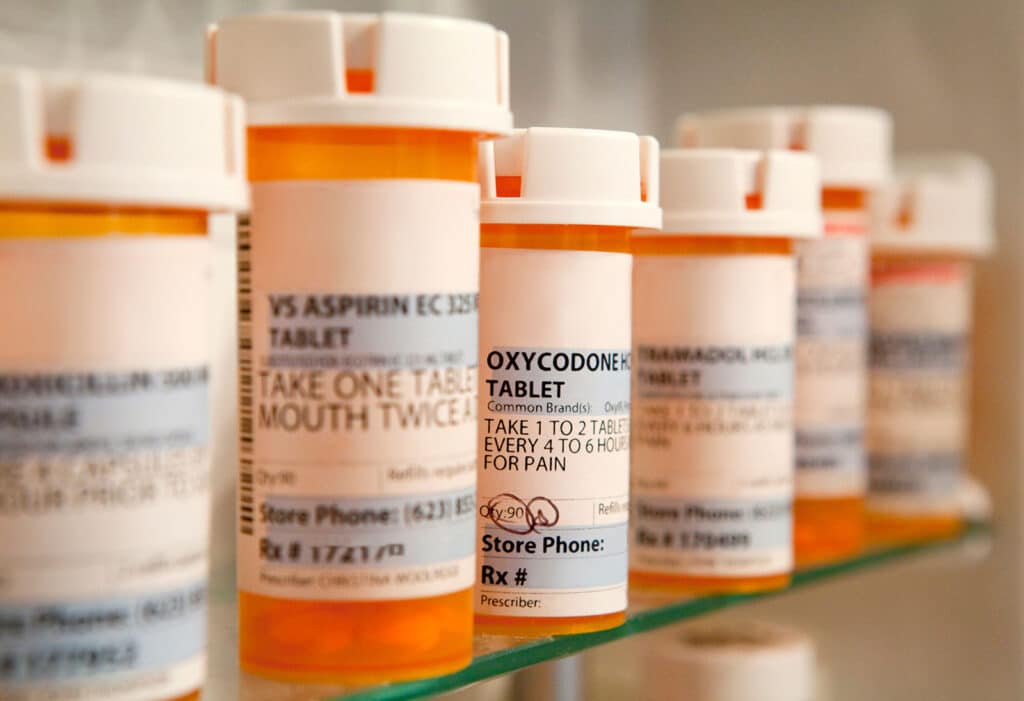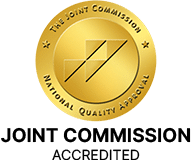When we think of prescription drugs, most of us immediately assume they’re perfectly safe as long as they’re FDA-approved and recommended by our doctors.
However, some drugs have a remarkably high potential for abuse and addiction that makes them almost as dangerous as illicit drugs if used incorrectly.
If you or a loved one are struggling with this type of addiction, you’re not without hope, as there are various addiction treatment methods to help you through this difficult challenge.
In this guide, we’ll explore these drugs to find out more about their addictive potential, causes, symptoms, and more.

Table of Contents
Why Some Prescription Medications Have Addictive Properties
All prescription medications should be taken with care, as they’re regulated to avoid their potential side effects.
In the case of medications with addictive potential, this is usually the result of two primary factors. Here’s a quick look at each one of them:
Disturbance of Brain Chemistry
One common feature among most addictive prescription drugs is that they interact with the central nervous system neurotransmitters, which are the natural brain chemicals that regulate our mood and feelings.
In those cases, these drugs will increase the concentration of the chemicals responsible for reward and pleasure, which reinforces the brain’s desire to re-experience these effects through continuous use.
Tolerance and Dependence
The disturbance in the previously mentioned brain chemicals is usually met by the body’s attempt to maintain balance through tolerance.
Simply put, as we continue using these drugs, our bodies will slowly develop tolerance to the effects of these drugs. In other words, our bodies will need to take more and more of the same drug to achieve the same initial effects.
As the cycle of tolerance and dose increase continues, dependence and addiction develop, in which the body’s cravings for the drugs intensify, causing uncomfortable withdrawal symptoms upon ceasing to use it.
An In-depth Look at the Most Commonly Abused Prescription Drugs
While a lot of drugs out there have a potential for substance abuse, the addictiveness of the following drugs is considered to be the most dangerous.
This is because they closely resemble highly addictive drugs and can lead to overdose with life-threatening effects if left untreated.
Opioid Painkillers
Opioids are a class of drugs that mimic the effects of natural substances in the body called “endorphins”, which are responsible for various functions, including pain relief.
Prescription opioids are mainly used to treat moderate to intense pain, but they’re also typically abused for the euphoric effects they produce, which leads to opioid addiction.
The most commonly misused drugs in this class are Oxycodone (OxyContin and Percocet), hydrocodone (Vicodin), morphine, and codeine.
Sedatives and Anxiolytics
Sedatives and anxiolytics come in a huge variety of classes, but the most commonly abused one here is “benzodiazepines”, also known as “benzos”.
These drugs affect the gamma-aminobutyric acid (GABA) neurotransmitter, which produces a calming effect. Drugs of this class are mainly used to treat anxiety and insomnia, with a few of them also used to treat seizures.
The most commonly abused drugs in this category are Alprazolam (Xanax), diazepam (Valium), and lorazepam (Ativan).
The risk of abusing these drugs can extend to serious effects like respiratory depression, coma, and sudden death.
Stimulants
Stimulants are a class of drugs that increase alertness, focus, and energy. They’re primarily prescribed to treat attention deficit hyperactivity disorder (ADHD) and narcolepsy (a sleep disorder).
The most common drugs in this section are Methylphenidate (Ritalin and Concerta) and dextroamphetamine (Adderall and Mydayis).
These drugs closely resemble the effects of methamphetamines and cocaine, so abusing them can lead to various heart problems, ranging from high blood pressure to heart attacks and strokes.
Causes and Risk Factors of Prescription Drug Abuse
While addiction is usually a complex condition with various factors contributing to the problem, some risk factors and causes are more commonly present among those suffering from this type of addiction. Here’s a quick look at them:
- Individuals who suffer from the previously mentioned conditions need to use these drugs under vigilant healthcare supervision to avoid addiction.
- Some people who aren’t prescribed these drugs may try to use them as a way to cope with their mental health disorders and other conditions.
- People who have a history of abusing other substances, such as alcohol or illegal drugs, are much more likely to develop an addiction to these drugs faster.
- Exposure to these drugs from a young age.
- Lack of knowledge about the addictive potential of these drugs and underestimating their effects.
Signs and Symptoms of Prescription Drug Misuse
Substance use disorder is associated with several characteristic symptoms and behavioral patterns. Here’s a quick look at the most common ones:
- Doctor shopping (seeing multiple doctors to acquire more prescriptions)
- Taking medication more frequently than prescribed
- Changing the mode of administering the drug (especially by crushing and snorting the drug instead of swallowing it)
- Drowsiness or fatigue
- Changes in appetite and weight
- Disturbance in sleep patterns
- Gastrointestinal problems (nausea, constipation, diarrhea, etc.)
- Slurred speech
- Impaired coordination
- Isolation from friends and family members
- Mood swings, irritability, and aggression
- Professional and academic decline
Prescription Drug Addiction Treatment Approaches
Prescription drug addiction follows a similar treatment program to traditional drug use disorder treatment. Here’s a brief overview of the different methods followed during treatment:
Medical Detoxification
The detox step is usually the treatment plan’s first and most critical step. This one is typically carried out in a treatment center with medication-assisted treatment.
In this stage, the drugs are completely eliminated from the body while medical professionals use various medications to manage withdrawal symptoms and cravings, such as methadone, buprenorphine, naloxone, and naltrexone.
Depending on the severity of the addiction, this stage can either be:
- Inpatient Treatment: Provides 24/7 medical supervision and support in a controlled medical facility. Ideal for severe addictions or individuals with co-occurring mental health conditions.
- Outpatient Treatment: A more flexible approach that allows patients with milder addiction and low risk of relapse to continue living at home while arriving at the treatment center daily to receive treatment and support.
Individual Therapy
The lengthiest part of the treatment process is the individual therapy stage, which starts as soon as detoxification is successful. This stage mainly focuses on identifying and working out the root cause of addiction.
It also includes various behavioral reform approaches to encourage recovered patients to overcome triggers and stress when they return to their daily lives.
The most popular approach here is Cognitive Behavioral Therapy (CBT), which is an evidence-based approach to changing the way individuals suffering from addiction think to avoid relapsing.
Support Groups
Sharing experiences, offering encouragement, and providing accountability are immensely valuable in your recovery journey, as they also fight the sense of isolation that addiction develops.
Group therapy connects you with others who understand the challenges of recovering from prescription drug abuse. This treatment approach heavily relies on peer-to-peer support, especially in 12-step programs.
Relapse Prevention Programs
Lastly, after release, the risk of relapse remains fairly high, which is why continuous care and support are necessary.
This is where the relapse prevention program comes in handy, as it focuses on the patient’s well-being to allow them to maintain their progress through various methods, such as exercise, continuous therapy, meditation, yoga, holistic medicine, and much more.
Final Thoughts
Incorporating the previously mentioned techniques in your treatment approach can massively increase your odds against prescription drug addiction.
However, you should always remember that addiction is a unique condition for everyone, so every case needs a personalized plan to increase its chances of a long-term recovery.
At Recreate Life Counseling, we understand the importance of developing a personalized treatment program and its effects on the entire journey.
If you live around the Boynton Beach area and are looking for addiction treatment, don’t hesitate to contact our highly qualified team to help you set foot on your path to recovery!
Please contact Recreate Life Counseling for additional information about Prescription Drug Addiction Treatment near you.



